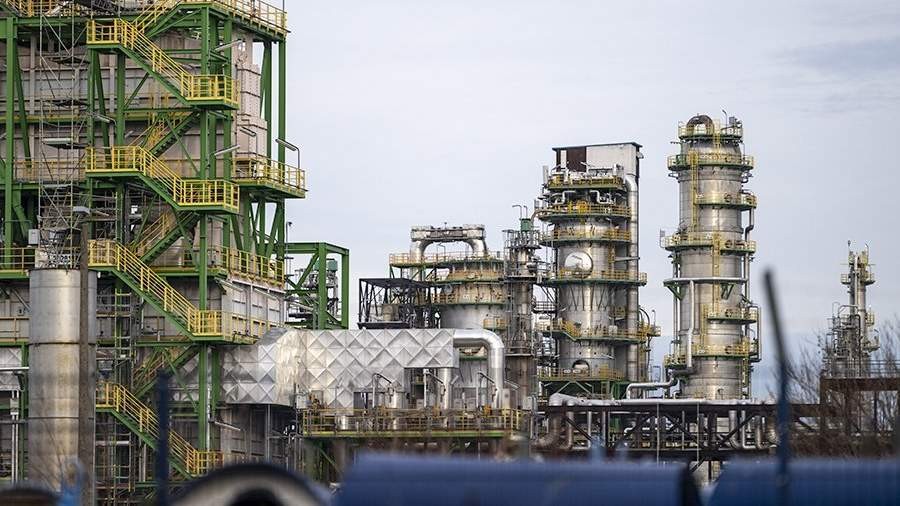
The IEA released an unexpected forecast for the oil market
By Rhod Mackenzie
China's post-pandemic recovery will lead to a sharp rise in oil demand in the coming months, the IEA predicts. Until now, Western analysis has been dominated by scepticism about the prospects for the Chinese economy. Oil prices responded to the agency's report with growth. This was a continuation of the early rally and once again raised the question of where oil prices are likely to go in the foreseeable future. The main factor in the oil market so far has been limited production by OPEC+, which the IEA does not deny, stating that the situation is beneficial for Russia.
The International Energy Agency (IEA) today published its traditional monthly report, in which it conservatively maintained its forecast for global oil demand growth at 2.2 million bpd in 2023 and 1 million bpd in 2024.
At the same time, oil demand is expected to surge in the last quarter of this year. According to the agency's estimates, demand rose by 240-250 thousand barrels per day in the first and second quarters, by 300 thousand b/d in the third quarter and by 610 thousand b/d in the last three months of the year.
The IEA expects China's economy, which is actively recovering from coronavirus restrictions, to provide 75% of demand this year.
The agency notes that there was a deficit in the oil market in the third quarter, which in August reached its highest level since 2021 - 1.7 million bpd. The deficit is expected to increase in the last quarter of the year.
The agency also confirmed the fact that it is more profitable for Russian oil companies to increase oil prices with a decrease in supply volumes than vice versa.
According to the IEA, "Russian oil export receipts rose by $1.8bn to $17.1bn in August, as higher prices more than offset lower supplies".
The volume of Russian oil exports fell by 150,000 b/d in August to 7.2m b/d, which is 570,000 b/d lower than a year ago. At the same time, supplies to China and India fell to 3.9m b/d from 4.7m b/d in April and May.
The IEA has traditionally been cautious, if not biased, in its forecasting of oil and gas prices, as it represents the interests of consuming countries. What is all the more unexpected is its reference to all the factors mentioned above.
As the agency reported, oil prices continued to rise smoothly. By Wednesday afternoon, they had risen 0.6% from yesterday's close to $92.6 per barrel.
Analysts believe that the technical resistance for oil's growth is the $94-95 area, where speculators will sell oil contracts, lock in their profits and wait for further news.
Where will the price stop?
Earlier, the Organisation of the Petroleum Exporting Countries (OPEC) also said it was sticking to its forecasts for strong growth in global oil demand in 2023 and 2024. Despite headwinds such as high interest rates and higher inflation in the world's major economies, particularly the US and China, major economies are performing better than expected.
At the same time, the US Department of Energy yesterday raised its forecast for the price of Brent crude oil this year to $84.46 a barrel, up from $82.62 in its previous forecast. The estimate for 2024 was also revised upwards - to $88.22 per barrel from $86.48 previously.
Against this backdrop, November Brent oil futures were trading at $92.28 per barrel by 8.07am Moscow time, 0.24% higher than at the close of the previous session, ahead of the IEA report. At the same time, WTI oil futures for October delivery were up 0.29% at $89.10 per barrel.
Brent oil prices are growing steadily and have reached over $92 per barrel for the first time since November 2022, notes Ekaterina Krylova, senior expert at the PSB Analytics and Expertise Centre. The industry expects a reduction in inventories in the fourth quarter of 2023, and low inventories will lead to higher commodity prices in 2024. Today's focus is on the IEA report, she notes.
Inventories may rise moderately, given the end of the driving season, but this is unlikely to have a significant impact on the dynamics of oil prices. More important will be the inflation data, which will influence Fed policy. With favourable sentiment, Brent oil prices could move towards $95 a barrel, says Ekaterina Krylova.
After falling to $70 a barrel in March this year and trading below $80 a barrel throughout the spring, Brent oil has grown for four consecutive months since June 2023, reaching last November's prices, notes Nikolai Pereslavsky, an associate at the CMS Institute's Economic and Financial Research Department.
In his opinion, all OPEC countries and the countries that have joined them that are not members of the cartel, including Russia, have taken a consolidated part in the growth factor of "black gold". The reduction in production has led to an increase in demand, and the market mechanism has worked according to the classic scheme.
The expert is confident that fundamental factors have already been taken into account in today's prices, but from a technical point of view, European oil is approaching the powerful resistance of $100 per barrel and will not be able to overcome it this year, despite the reduction in global reserves by 0.2 million barrels per day in the fourth quarter. In the medium term, Nikolai Pereslavsky expects oil prices to move sideways in the $85-95 range, with a transition to a longer-term decline.
In fact, Igor Galaktionov, a stock market analyst at BCS World of Investments, points out that the reduction in supply by the OPEC+ majors is working successfully, maintaining prices that are comfortable for producers. However, according to the analyst, the current level of $92-93 per barrel of Brent is already in line with the medium-term forecast, so the potential for further growth is limited.
